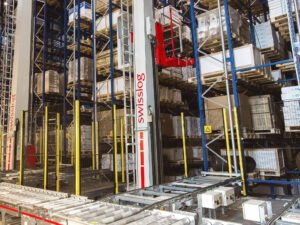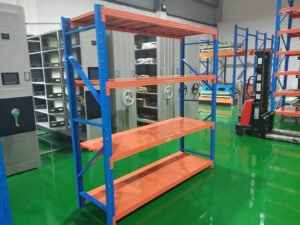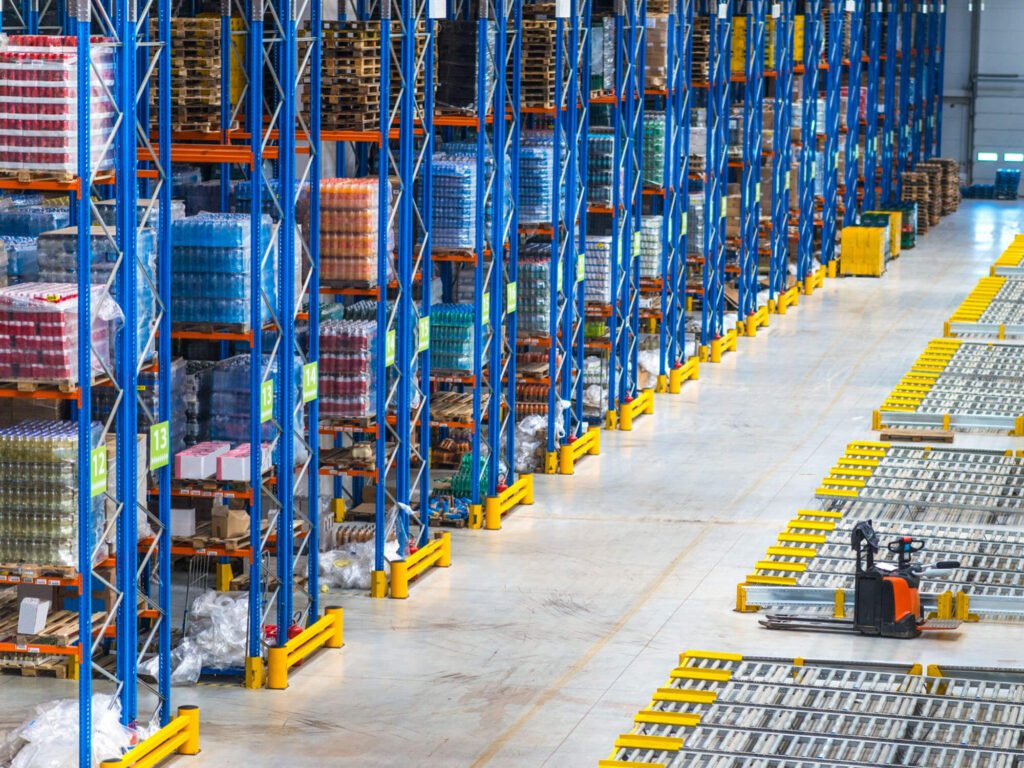The warehouse is the backbone of a business and if it is not well organized the business ends up suffering due to inefficiency. Hence, the significance of an appropriate warehouse design plan cannot be undermined. If you are inclined to learn about how to organize a warehouse, the guide below is meant for you. So, let’s take a look.
Assessing Your Current Warehouse Layout and Inventory
Before you plan to organize your warehouse, the most important aspect is assessing the current layout as well as inventory. By such an assessment you can identify the loopholes and look forward to resolving them smartly. The section below highlights how to conduct a warehouse audit and analyze the inventory needs.
Conducting a Warehouse Audit:
When conducting a warehouse audit before implementing a warehouse organization system, some of the important considerations are as follows:
- You can design a map of your current warehouse layout. Analyze the flow of goods from the point of receiving to the point of shipping. Consider the routes that help to minimize travel time and add accessibility to areas in high demand.
- Analyze the racking systems that are in place and your storage equipment, and compare if they both suit your inventory nature or not. For instance, if you have pallet racks in place check if they cater to having easy pick and place options or not.
- Analyze the inventory management process that prevails in your warehouse. This includes the process of tracking, stocking, and labeling, ensuring each of these processes is handled accurately.
- Look for areas of improvement by analyzing the delays, spotting the congestion points, and finding the unused areas. It helps to look for better warehouse designs by implementing alternative solutions.
Analyzing Inventory Needs:
As much as your warehouse layout needs your attention, the inventory requirements also need analysis. Some of the aspects that you must consider in the context of your inventory reagents are as follows:
- Classify inventory in groups of small products, slow-moving items, and fast-moving items. This way you can store them in positions that lead to operational efficiency. Products having high demands should be close to the parking areas and slow-moving products can be in the least accessible storage zones.
- Evaluate the rate of inventory turnover. It gives you an idea of the speed at which the inventory is moving in and out of the warehouse. Fast-moving items can be stored in easily accessible areas.
- The type of inventory determines the type of storage which should be incorporated. Products that are bulky may need the right size of storage systems. Whereas the small products need shelves or racks that are close to work states if they are fast moving.
Designing an Optimal Warehouse Layout
The warehouse can be huge or small warehouse organization layout plays a vital role in the efficiency of warehouse operations. Some of the ways you can implement and achieve an organized and efficient warehouse are discussed in the section below.
Key Principles of Warehouse Layout Design:
The most important principles that your warehouse design layout must have are as follows:
- The aisles you install in the warehouse should be wide and clear. They must be capable of supporting the movement of forklifts and pallet jacks so that they can be organized properly and accessed immediately.
- When a warehouse is designed by function, the process of picking and packing speeds up. You can dedicate each area of the warehouse to a specific function like a separate area for receiving, storing, packing, and shipping. It keeps the process of order picking smooth.
- The layout of your warehouse should be designed logically, high traffic areas must be closer so that the travel time is reduced.
Creating Work Zones:
Specifying the work zones also simplifies the process of order fulfillment and the time of the staff is not wasted. Some of the ways you can create these zones are discussed below:
- The receiving area should be close to the gate from which the goods enter, it reduces the handling time.
- Storage zones must be organized and accessible from the receiving as well as picking sides.
- The picking and packing areas are ideal to be next to one another so that the high volume orders can quickly be catered to.
- There should be a buffer zone as well where the inventory can be held at the peak time and such areas should be near packing or receiving zones.
- The shipping zone must be close to the gate so that it may be handed over to shipping companies or customers immediately.
Optimizing Aisle Space:
It is important to determine the width of the aisle so that you can see if the forklifts can easily move or not. There are narrow aisles as well but they are only suitable if your equipment is narrow.
The aisle should have sufficient width so that the forklifts can move, turn, and pick up the products without any obstructions. Similarly, the staff should also be capable of reaching and accessing the aisles without any barriers.
Choosing the Right Storage Solutions
When you are thinking about how to organize the warehouse, paying attention to the selection of the right storage systems is crucial.
Types of Storage Racks:
There are different types of racks which you can choose based on your requirements and each type of racking system has different functions. Some of these racking systems are as follows:
- Selective Pallet racks: These racks are suitable for items that need high accessibility and are fast-moving. These racking systems are highly versatile and can cater to a wide range of products.
- Drive-In/Drive-Thru Racks: These racks are suitable for storing a high volume of similar products.
- Push-back Racks: These racks are suitable for items that have a moderate inventory turnover. They allow multiple pallets storage and each is pushed back by the incoming one.
- Shelves: Some small-sized items can very conveniently be stored on shelves. There are different shelves like static shelves which hold products that do not need rotation, and mobile shelves which are movable.
- Cantilever racks: These are the ones suitable for storing items that have a huge size like pipes.
- Mezzanine levels: These are such types of storage solutions that add a new floor vertically to expand the storage space.
Storage Solutions Based on Inventory Type:
The selected storage solutions for the organization must also consider the type of inventory.
The bulk goods can be stored in push-back, pallet racks, or driven racks as they help to maximize space. The selective pallet racks are also suitable for storing individual pallets with quick access. In the case of small-sized items shelves offer quick access and the gravity flow racks are also suitable as they allow immediate access as well as restocking.
Vertical Storage:
You can also opt for the tall racks as they offer more storage space and are meant to store large-sized items that are not frequently needed. Moreover, the mezzanines can also increase the storage space offering a cost-effective solution.
However, the various options play a vital role in the selection of storage racks. It is important to keep a check on the weight limits for each rack type so that they are not overloaded. Also for mezzanines, the guardrails and netting should be used for fall protection. The tall racks must be reached through relevant equipment which handles the items safely.
Setting Up an Effective Picking System
The effectiveness of the picking system plays a very crucial role in the process of warehouse organization. The section below highlights some tips that can create an efficient picking system.
Types of Picking Systems:
There are different types of picking systems and by implementing each of these based on your inventory type you can enhance the efficiency of your warehouse.
- Single Order Picking: It is suitable for operations that take place on a small scale and when there are two volumes of orders. The picker in this system completes a single order at a time and everything on the list is collected. It is very simple but takes time as the picker has to travel through the entire warehouse.
- Batch Picking: Batch picking is suitable in a warehouse where a high volume of identical items is needed to be picked up. It allows the picker to collect multiple items in one go. It reduces the time but requires sorting.
- Zone Picking: Zone picking helps to cater to large warehouses that are divided into different zones. Every picker has a certain zone specified and the order moves through each of the zones. It reduces the movement of the picker and also multiple orders can be covered in one go. However, it requires automation for better management.
Some innovation and automation can be added to the picking system as well. You can choose to incorporate a pick-to-light system where lights guide pickers about the location of the products. It is suitable for environments that need high-speed picking. Voice-directed picking uses voice commands to guide pickers, which reduces the chances of errors.
Optimizing Picking Routes:
The optimization of picking routes even helps in organizing the warehouse. You can incorporate such routes that minimize travel time. Incorporation of software that helps design picking paths is also suitable.
Organizing Inventory Based on Picking Patterns:
The optimization of a warehouse can also be enhanced by keeping the items that are fast-moving near the shipping zones. It helps to reduce the travel time and fastens the process of order fulfillment.
In the case of perishable items, you must implement the FIFO system so that the stock doesn’t get old and is not wasted. ABC analysis also helps organize the warehouse where you can grade the items as A, B, and C. The A-grade items comprise high-demand products. B grade can be slightly far away as they have a moderate demand and C can be in less accessible zones due to low demand.
Implementing an Inventory Management System (IMS)
Inventory management systems are also implemented to improve warehouse management. They offer excellent features and benefits.
Benefits of an IMS:
The IMS system has many advantages as it helps to enhance the accuracy and efficiency of the warehouse. It tracks the level of inventory to avoid stockout or overstocking and also automates the reordering process. Such a system helps in minimizing errors and improves the overall efficiency of the warehouse.
Features to Look For:
The IMS system has some important features which help to minimize the errors in the tracking process. They have RFID tracking and barcode scanning which helps to carry out efficient order management. These tools even offer to present the analytical data which helps to forecast the demand patterns.
Integrating Inventory Management with Warehouse Layout:
The effectiveness of IMS can be maximized by integrating it into the layout of the warehouse. You can have handheld scanners positioned in areas of high traffic, which allows workers to access the inventory data quickly. The task of picking, packing, and organizing improves and the real-time data is updated consistently.
Organizing Inventory for Easy Access and Management
The management and easy access to inventory in a warehouse require you to learn how to organize a warehouse and how to organize warehouse supplies efficiently.
ABC Analysis:
The ABC analysis offers a great approach for organizing the warehouse because the inventory is graded. It can be placed according to its priority and hence the process of retrieving the inventory simplifies.
Labeling and Signage:
Labeling is a crucial concern in the warehouse, it helps in navigating the warehouse and even the errors in picking the items are reduced. By labeling the shelves, aisles, and other storage racks the employees are in a position to distinguish between the products and pick the right item.
FIFO vs. LIFO Methods:
There are multiple inventory management systems among which FIFO and LIFO are highly popular. Based on the nature of inventory the right method must be chosen. If you are operating a warehouse that comprises personal items opting for FIFO inventory management is suitable. However, if the items are not perishable you can opt for LIFO.
Warehouse Workflow and Process Optimization
Warehouse workflow optimization keeps the warehouse organized and some of the ways it can be done are discussed below:
Streamlining Receiving Processes:
By way of streamlining the process of receiving the warehouse efficiency can be enhanced. You can dedicate the areas for quality check and receiving so that your products can be inspected and do not even disrupt the workflow.
Optimizing Packing and Shipping Areas:
The shipping and packing areas also must be organized so that the speed of fulfilling the order increases. The packing station should be equipped with all the necessary packing materials so that the staff doesn’t have to search for them. The use of conveyors and carts can also speed up the movement of the packed products toward the shipping zones.
Cross-Docking for Speed:
Cross-docking method helps to move the products directly from the point of receiving to the point of shipping and the process of storage is eliminated. It is suitable for items which have a high rate of turnover. It reduces the time spent in handling and also the storage needs are minimized.
Utilizing Technology and Automation
The evolution of technology and automation has led to the use of a warehouse management system which offers ample benefits when it comes to organizing the warehouse.
Warehouse Management System (WMS):
The Warehouse Management System adds many benefits by offering a real-time upgrade of the inventory levels. It even helps in tracking the inventory movement and easily integrates with other systems in place. The implementation of such software leads to automating the process of stock count, reordering, and minimizing human error chances.
Barcode and RFID Systems:
RFID and Barcode systems enhance the accuracy of the data. The barcode scanner scans the levels and RFID reads multiple tags at the same time. The two of these differ in terms of process as barcode scanners are affordable but RFID requires a high initial investment. Based on your budget you can choose the system for your warehouse.
Automation Tools:
Automated tools consisting of robotic arms, and conveyors enhance warehouse efficiency in a commendable way. You can incorporate these tools in your warehouse design plan and make the most of their efficiency. It offers productivity and even helps in reducing the labor cost.
Safety and Compliance in Warehouse Organization
When designing the warehouse, considering safety features is crucial, it helps to keep the staff as well as the inventory safe. Some of the safety procedures that can be implemented in the warehouse organization are as follows:
Safety Standards and Best Practices:
The safety standards in a warehouse must be followed so that everything is under control. The racks should have loads that are within their limits so that the risk of collapsing can be prevented. Moreover, the mezzanines should have guardrails to prevent falling. The racks and other storage areas should be inspected for damages from time to time.
Emergency Preparedness:
The emergency plan of a warehouse should be well-designed. The emergency exits should be marked and have unobstructed passages. The staff should have access to evacuation routes, fire extinguishers, and fire alarms should be incorporated.
Training and Signage:
Proper training of the staff is also important for the safety of the warehouse. Staff must be trained ensuring that the emergency procedures are understood and are able to identify the exit signs clearly. The signage should be designed for the understanding of the staff so that they can navigate in case of emergency.
Continuous Improvement and Monitoring
Warehouse design plans must be effective not just for some time but also in the long run. Hence, continuous monitoring and improvements are needed. This section highlights the significance and ways a warehouse can be monitored.
Setting Up Key Performance Indicators (KPIs):
KPIs must be established to keep a check on the performance of the warehouse. You can analyze the inventory turnover rate, accuracy of order, and time taken for picking the order. These analyses help you have an idea of the operational efficiency of the warehouse and identify the areas of improvement.
Conducting Regular Audits and Adjustments:
Timely audits should be conducted so that the stock counts can be undertaken and the space utilization in the warehouse is assessed. The findings from the audits help make improvements on whether the storage areas need any rearrangement or whether the picking methods require updating or not.
Feedback Loops:
Keep your staff in loops and take suggestions from them for the improvement of the warehouse in terms of processes and layout. They closely work in the warehouse and have a better idea of the operational efficiency of the warehouse and help you make relevant adjustments.
Conclusion
The warehouse design plan plays a very significant role in the success of the warehouse performance and hence should be considered as a prime aspect. Lracking offers excellent warehouse solutions by optimizing the storage space with its custom-designed racking systems and these racking systems offer an optimal warehouse layout.




